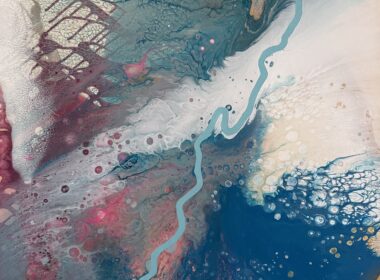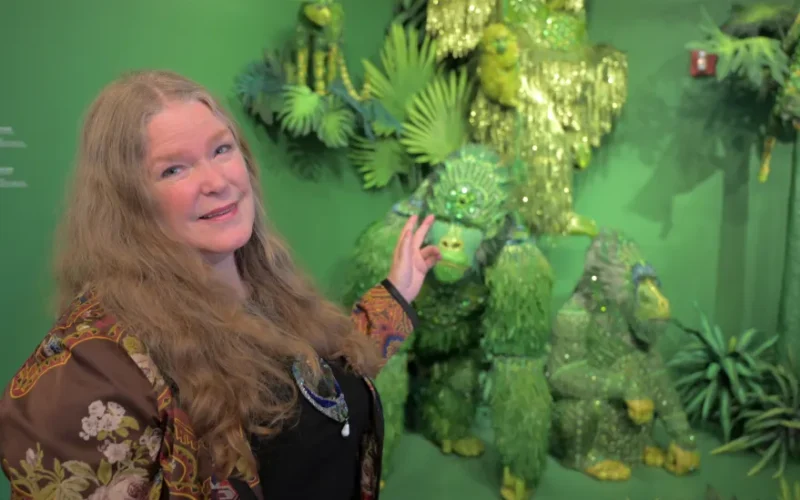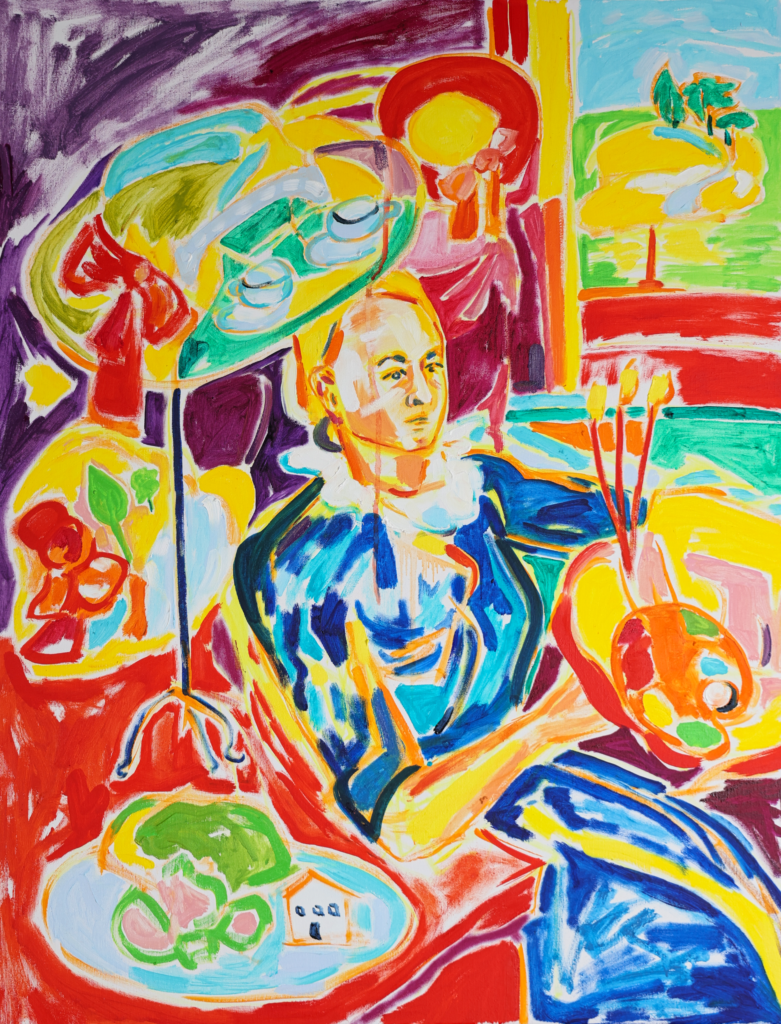
How Shray’s Sculptures Invite Interactive Expressionism while Exploring Light, Shadow, and Mass
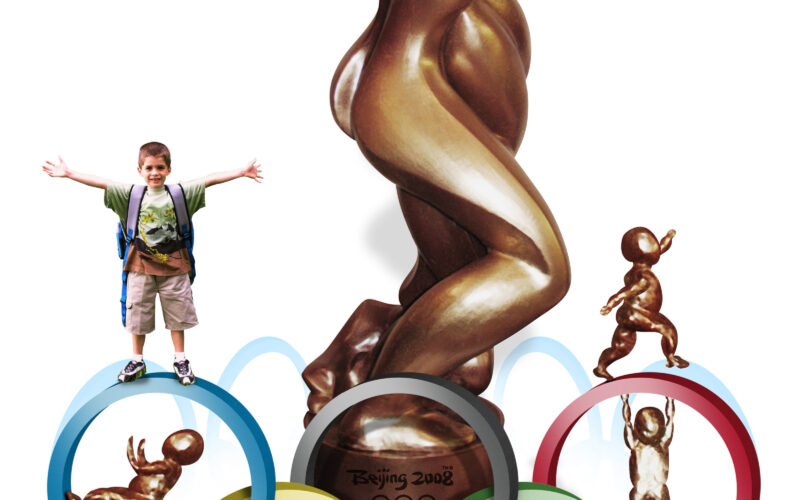

Exploring Light
Shray is a renowned fine artist and sculptor who grew up in San Francisco during the vibrant 1960s. In this interview, she shares her journey, starting from her childhood love for creating art, which was sparked by a visit to the Louvre. Shray also talks about her training and mentorship with Piero Mussi and how these experiences shaped her way of sculpting. She also opens up about her creative process, what inspires her, and the importance of patience and hard work in becoming a great artist. Through her stories, we learn about the deep emotions she captures in her sculptures.
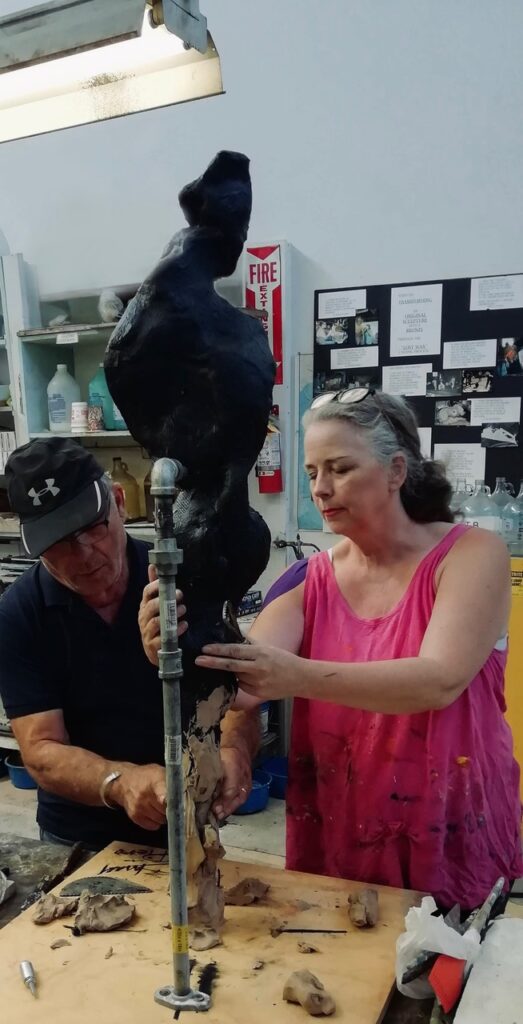
Shray, a distinguished fine artist and sculptor, finds beauty in the profound and the unspoken. Growing up in San Francisco during the turbulent 1960s, Shray’s early years were marked by a quest for meaning amidst familial challenges and cultural upheavals. A pivotal moment came when she sculpted a figure from the dirt between the floorboards of her childhood home, an act of creation that ignited her passion for art. Shray’s journey took her to the Louvre at 15, where the masterpieces confirmed her desire to pursue fine art. Over the decades, she has honed a unique sculptural technique known as the “subtraction method,” where she reveals forms within the clay by removing material, similar to a stone sculptor. This approach has drawn comparisons to masters like Henry Moore, Rodin, and Brancusi for its emotional depth and simplicity of form.
Her works, such as the award-winning “Raising Tomorrow’s Olympic Champions,” which was showcased at the 2008 Beijing Olympics, embody her philosophy that the essence of art is measured by what is removed rather than added. Shray competed against 2,800 other artists and won this piece’s prestigious 5 Rings Award, a landscape and design competition. Her sculptures invite viewers to explore the interplay of light, shadow, and mass, transcending traditional artistic boundaries. Shray’s recent explorations in “Interactive Expressionism” encourage viewers to engage and add their own narratives to her pieces, fostering an infinite dialogue between the artwork and its audience. Her current exhibition, “Moment in Time,” features her newest works that capture movement in stillness, striving to achieve depth through two-dimensional compositions. Recognized nationally and internationally, Shray’s works are cherished in prestigious collections, including those of the Spencer family and the Rockefeller collection. Her art continues to evolve, consistently inviting a deeper understanding of the human condition and the universal experience.
1. Shray, your journey into sculpting began at a young age with a profound encounter at the Louvre. Can you share more about that moment and how it sparked your passion for sculpture?
My experience at the Louvre truly solidified my commitment to sculpture. I remember walking into the Louvre before the glass pyramids were there. You would enter this immense hall and be immediately struck by a grand marble staircase. At the top of this staircase stood The Winged Victory of Samothrace, a masterpiece that was almost decadent in its glory. Standing nearly 20 feet tall with wings spread wide, it felt alive even from the bottom of the staircase. The movement was palpable, and the way the fabric clung to the female form beneath was extraordinary. As I stood there, awestruck, it looked as if she had just landed or was about to take off, her wings stretching horizontally as she would soar from the staircase.
The draping of the fabric over her form, a hallmark of Greek sculpture, revealed the goddess’s body beneath in such an expressive, almost spontaneous way. The marble seemed to breathe with life, capturing movement and form in a manner that defied its weight and solidity. That moment was pivotal for me. I realized I wanted to work through subtraction, removing material to expose the form within rather than building up with clay on an armature. I was captivated by the idea of reducing the mass to reveal movement and humanity. I turned to my mom and said, “This is it. I’m going to be a sculptor.” She was an artist herself and understandably concerned, urging me to consider a more stable career like law. But I was resolute. Despite her reservations, she eventually agreed to let me pursue my passion after I promised to visit Reed University and explore becoming an attorney first. But deep down, I knew sculpture was my true calling.
Every line and form in the sculpture must be created with the concept of this movement in mind, ensuring that the final piece retains its intended dynamism without obstruction
Shray
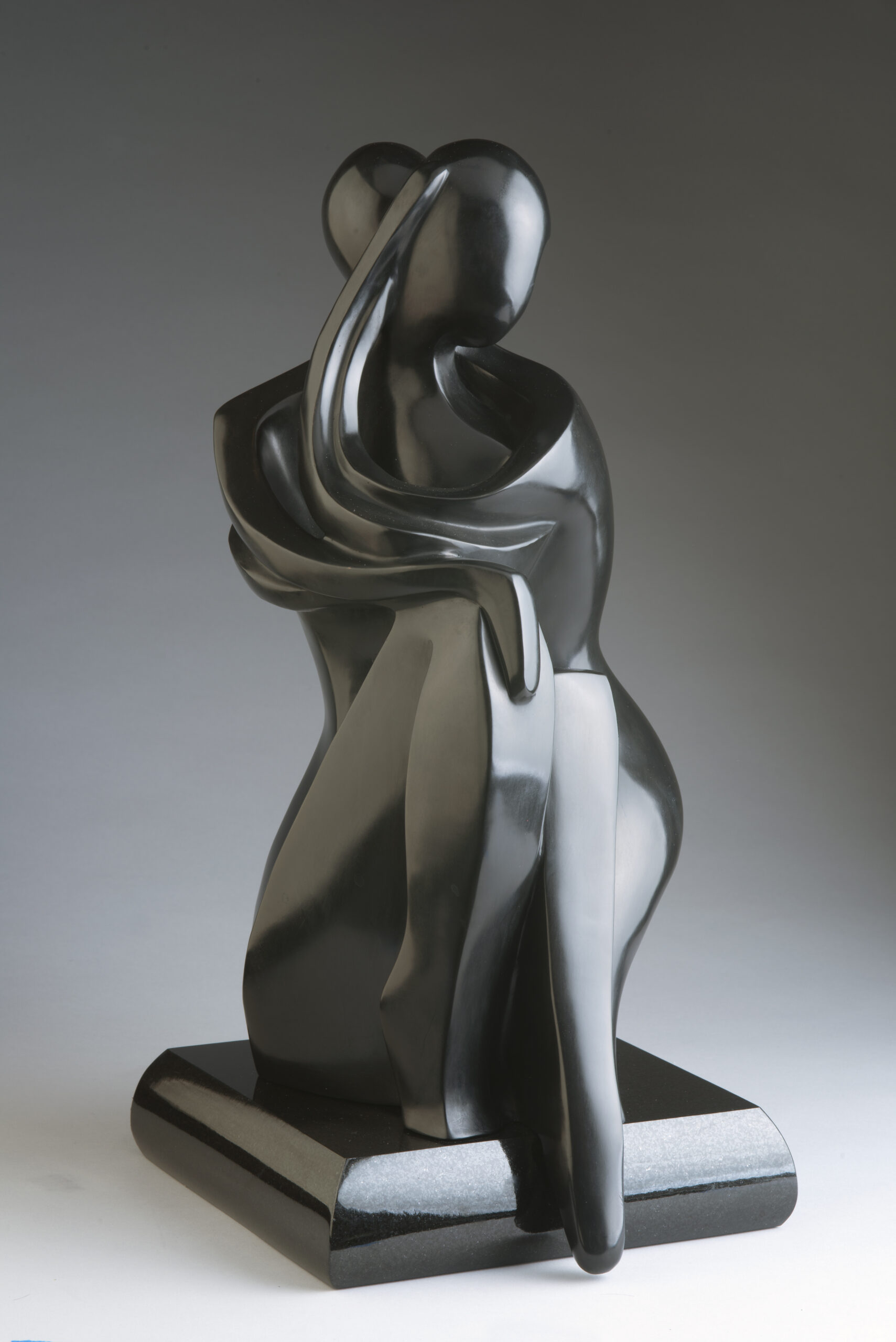
2. You’ve undergone formal training at prestigious institutions and mentored under Piero Mussi at Mussi Artworks Foundry. How have these experiences shaped your creativity and approach to sculpting?
My mentorship under Piero Mussi at the Mussi Artworks Foundry was truly transformative. Piero, a formally trained foundry owner from Italy, gave me the invaluable opportunity to learn the intricate process of casting sculptures in bronze. He gave me free rein at the foundry, allowing me to understand the gifts and challenges of this medium firsthand. The magic of Piero’s mentorship lay in his ability to teach me how to maintain the movement and human element of my sculptures from clay to bronze. Capturing the clay’s emotions, form, and integrity while transitioning to a hard metal is no small feat. Piero instilled in me the importance of visualizing the flow of liquid bronze as it moves through the mould.
Every line and form in the sculpture must be created with the concept of this movement in mind, ensuring that the final piece retains its intended dynamism without obstruction. For instance, when pouring bronze into a mould, you must anticipate how the metal will flow like a river, navigating obstacles. If an obstruction exists, it can create aberrations in the final sculpture. Therefore, when sculpting features like an arm, leg, or head, it’s crucial to design them in harmony with the flow of the bronze. This approach avoids disruptions and ensures the sculpture’s fluidity and grace. This mentorship was essential in shaping my expressionist style and my commitment to the art of bronze sculpting. Piero’s teachings on working with the natural flow of hot metal have been invaluable. He offered me a rare and profound understanding of the craft that few places share today.

3. Collaboration seems to be a significant aspect of your creative journey, now working with Alan Osborne at the Art Foundry and Gallery. How does collaboration influence your creative process, and what do you hope to achieve through this partnership?
In 2008, I embarked on a wonderful creative journey with Piero Mussi, owner of Mussi Artworks Foundry, and Alan Osbourne, who owned the competing -Artwork Foundry and Gallery. This collaboration was pivotal in translating my visions into safe, structurally sound sculptures when I competed against 2,800 other artists to win the Olympic landscape sculpture competition ‘Five Rings Award’ in Beijing.
I developed the concept, imagery, and goals for the Olympic piece, focusing on the message I wanted to convey. Piero and Alan worked on the engineering aspects. The beauty of working in bronze lies in the synergy between the artist and the foundry team. Having a great foundry owner and skilled artisans is imperative for fine art sculpture. Their expertise in metalwork, welding, and casting, combined with engineering support, ensures that large pieces are structurally sound and can stand up safely. This collaboration allows for the practical realization of artistic visions, addressing crucial questions of stability and safety. For example, in my composition piece for the Olympics, featuring two fingers holding a baby in the air and the five rings made of hard rubber, I created the balance and weight distribution, but Alan and Piero worked as a team and helped determine the safest way to achieve this. They provided solutions for securely attaching the sculpture and creating a safe, interactive environment for children to play around the larger rubber rings in this 12-foot sculpture.
Through my partnership now with Julian Mussi, Piero’s son and owner of the same artworks foundry, I hope to continue pushing the boundaries of what’s possible in bronze sculpture. This collaboration ensures that my creative process is supported by technical expertise, allowing my artistic visions to be realized with beauty and structural integrity.

4. Your sculptures aim to capture human emotion while navigating the fine line between figurative and abstract representation. How do you approach this delicate balance, particularly when expressing themes of love, kindness, and beauty?
When I start working with a mass of clay, I approach it without preconceived ideas or pre-drawings. I allow the material to guide me. I observe the lines, shadows, and shapes naturally forming within the clay. These subtle details, such as how the light hits the clay or the inherent color variations, reveal movements and twists that inspire the sculpture and expose its innate beauty. As I pull away the clay to expose these lines, I begin to see parts of the human anatomy emerge—perhaps an arm or a shoulder. This process is intuitive; once a part of the form is revealed, I follow the natural balance and flow, uncovering the story and human emotion embedded within the piece.
Each line and shape contributes to this narrative. Once I uncover an area that embodies the piece’s emotion, I consider it sacred and refrain from altering it further. This preserved area becomes the core of the sculpture’s emotional expression. From there, I continue to expose the rest of the form, ensuring that the initial emotion carries through the entire sculpture. I rely on the natural lines to guide me, working to ensure they interact harmoniously. This approach allows the sculpture to evolve organically, capturing themes of love, kindness, and beauty in a way that feels both intuitive and profound. The lines lead me, and my role becomes one of revealing the inherent emotion and form within the clay, striking a balance between figurative representation and abstract expressionism.

Mastery doesn’t come instantly. You need to allow your eyes, imagination, and hands to learn how to communicate with each other. Once these three elements begin to speak to each other, you’ll start building a foundation for the creative process.
Shray
5. Lastly, could you give us a glimpse into your daily studio practice? What rituals or routines do you follow to maintain creativity and inspiration in your work?
The studio is a very separate, sacred place for me. Each day begins with a ritual: I have tea or coffee and approach the sculptures I’m working on. I remove the plastic and damp rags that keep the clay moist, then spray the pieces with water. This maintains their workability and gives them a slight shimmer, showing how they might look in metal. If it’s morning, I work in natural light, letting the sun create deep shadows and undercuts. Otherwise, I turn on the studio lights. Music is essential to my process, so I turn it on to set the atmosphere. I then begin by turning the sculpture table stand, examining the form and emotions in the clay.
I follow the lines, refining them as I interact with the sculpture. As I near the completion of a piece, I spend considerable time simply observing it. I slowly rotate the sculpture, ensuring that every profile and line flow harmoniously with the others. It’s as if the clay disappears, leaving a network of lines interacting perfectly with one another. This spatial relationship is crucial to my work. When the day ends, I return the sculpture to its original position, referencing the first line I found embedded in the clay. I dampen and wrap it up again, turn off the music, and leave the studio, closing the day’s creative chapter. These routines fill me with creativity and inspiration. I wait for the clay to reveal its shadows and warmth, guiding my imagination. Whether drawing, sculpting, or working in another medium, the initial line always connects to the next, leading me through the creative process.

Loveland Invitational-Outside shot-Bronze
Shray’s journey from a young girl passionate about art to a celebrated sculptor is inspiring. Her experiences teach us about following our dreams, the value of great mentors, and how art can express deep human emotions. Shray’s sculptures invite us to connect with these emotions and see the beauty in both form and feeling. To learn more about Shray, click the following links to visit her profile.







